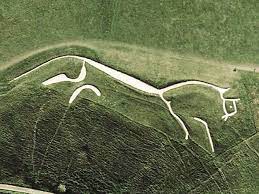What Are Geoglyphs?

Experts and conservationists have raised concerns over the proposed location for a mega oil refinery in Barsu village of Ratnagiri district of Maharashtra.
Geoglyphs:
- Barsu sites in the Konkan region were added to a tentative list of UNESCO’s world heritage sites and protected by the state archaeology department and the Archaeological Survey of India (ASI).
- Geoglyphs are a form of prehistoric rock art, created on the surface of laterite plateaus.
- They are made by removing a part of the rock surface through an incision, picking, carving or abrading.
- They can be in the form of rock paintings, etchings, cup marks and ring marks.
- Clusters of geoglyphs are spread across the Konkan coastline in Maharashtra and Goa, spanning around 900 km. Porous laterite rock, which lends itself to such carving, is found on a large scale across the entire region.
- It has more than 1,500 pieces of such art, also called “Katal Shilpa,” spread across 70 sites.
- This is evidence of the continued existence of human settlements from the Mesolithic (middle Stone Age) to the early historic era.
- UNESCO’s tentative world heritage list mentions seven sites with petroglyphs in Ratnagiri district — Ukshi, Jambharun, Kasheli, Runde Tali, Devihsol, Barsu and Devache Gothane, one in Sindhudurg district –Kudopi village, and nine sites at Phansamal in Goa.
- The figures depicted in the geoglyphs include humans and animals such as deer, elephant, tiger, monkey, wild boar, rhinoceros, hippopotamus, cattle, pig, rabbit, and monkey.
- They also include a high number of reptilian and amphibian creatures such as tortoises and alligators, aquatic animals such as sharks and sting rays, and birds like peacocks.




